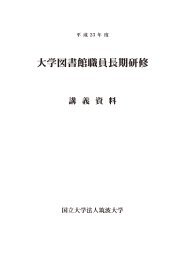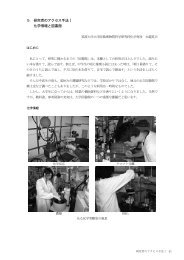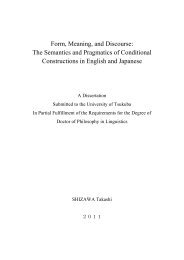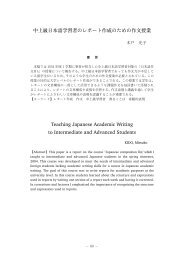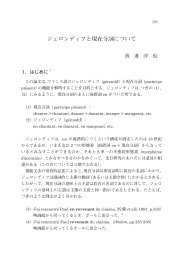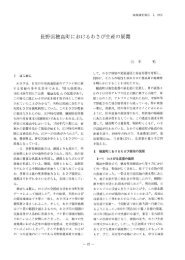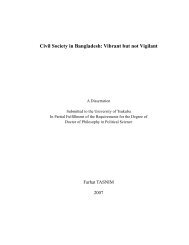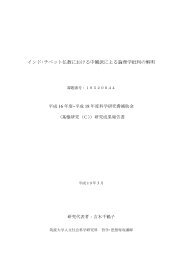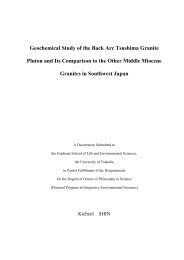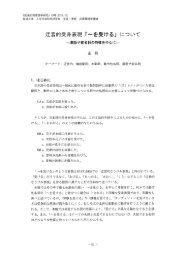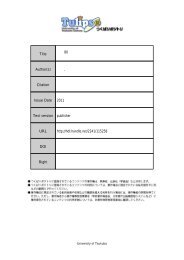Gamma Rays and CarbonIon-Beams Irradiation for Mutation ...
Gamma Rays and CarbonIon-Beams Irradiation for Mutation ...
Gamma Rays and CarbonIon-Beams Irradiation for Mutation ...
Create successful ePaper yourself
Turn your PDF publications into a flip-book with our unique Google optimized e-Paper software.
placement among the plants (Fig. 30, C). Three leaf-fragments were placed<br />
per plant; two at the base of the plant <strong>and</strong> one inside the canopy <strong>for</strong><br />
inoculation (Fig. 30, D). To ensure the inoculation of the plants, 170 leaf-<br />
fragments were placed on the flat at the nursery. All the leaf-fragments<br />
were sited exposing the abaxial side of the leaf to the plants.<br />
As a preparation of the plants to be inoculated, the abaxial side<br />
of the leaf was cleaned by using a soft cotton tissue to remove the cuticular<br />
wax substance in order to permit a fast penetration of the fungus. The<br />
plants were grouped <strong>and</strong> the leaf-fragments inoculums were sited. Finally,<br />
by using a fickle cotton sheet the plants were covered to simulate an<br />
incubation chamber to ensure the sporulation <strong>and</strong> enhance the inoculation.<br />
The fickle cotton sheet was moistened thrice a day within 48 hours (Fig. 30,<br />
E). After this, the cotton sheet was removed. Around 10 days interval, both<br />
the second <strong>and</strong> the third leaf were inoculated using this method, however<br />
this inoculation also has an effect on the inoculation of the whole plant.<br />
After inoculation, the plants were kept in the nursery area <strong>and</strong> a week later<br />
the experiment was established at field conditions (June, 2006). ‘Williams’<br />
vitroplants obtained from a commercial nursery were planted surrounding<br />
the experiment to avoid edge effects <strong>for</strong> the statistical analysis. The<br />
available numbers of plants per doses/cultivar were distributed in two<br />
replications (Fig. 31). To increase the pressure of inoculum in the<br />
environment where the plants were planted, diseased leaves from a banana<br />
collection belonging to the Estación Experimental Tropical Pichiligue were<br />
collected <strong>and</strong> placed near to the plants in the experiment (Fig. 32).<br />
The disease development periods (DDP-days) was recorded,<br />
which consisted in the days between the inoculation time until the full<br />
development of the spot with dry gray center, using the stages of symptoms<br />
described by Fouré’s scale <strong>and</strong> the disease severity determined by the<br />
infection index (II-%) calculated using the values obtained from the<br />
80



